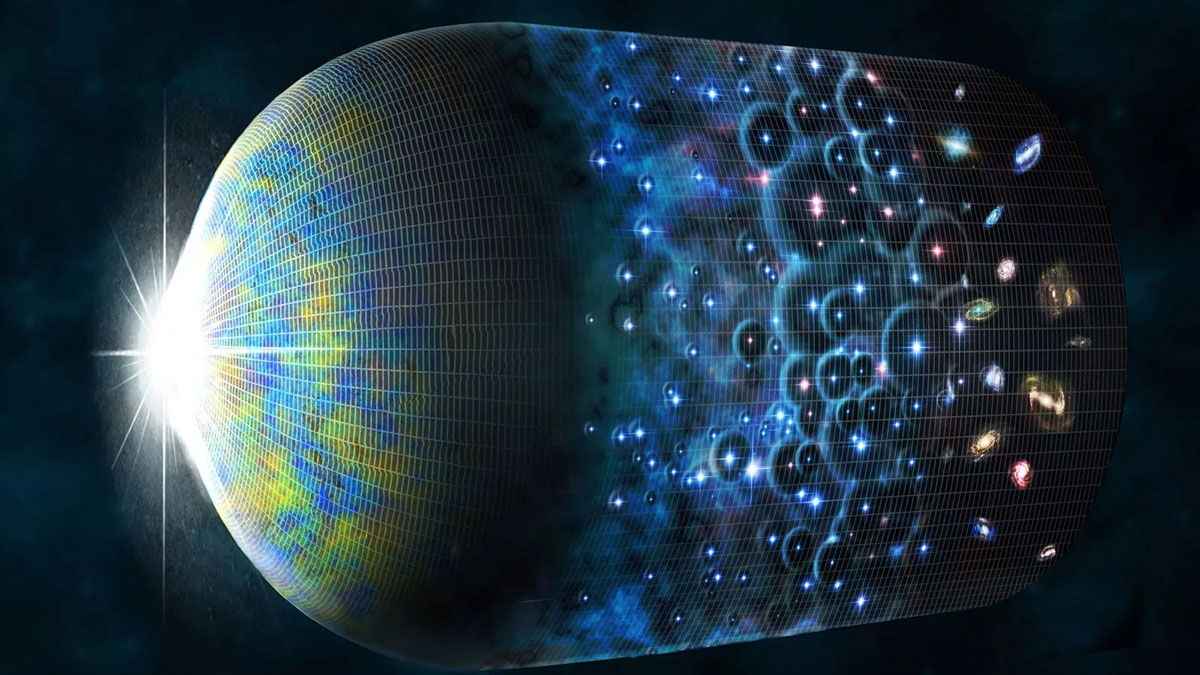the daily galaxy’s alternative chronology

Is it really so much to ask of a popular blog that advertises itself as a science news magazine to actually stick to facts rather than either publish any random thing they can with zero fact checking, or just anything that its editor thinks could reel in a few hundred more views? Yes, once again Casey Kazan decided to wildly jam his foot down his esophagus with a short post trying to ask if our universe is really 150 billion years old rather than the accepted 13.7 billion years we all know from textbooks and scientific manuscripts. His citation for the big claim? An amateurish paper published in the grandly named Journal of Cosmology, from which he rather blatantly copied and pasted two paragraphs which posit the following…
A team of British, American, and Hungarian astronomers reported that the universe is crossed by at least 13 ‘Great Walls’, apparent rivers of galaxies 100Mpc long in the surveyed domain of seven billion light years. They found galaxies clustered into bands spaced about 600 million light years apart that stretch across about one-fourth of the diameter of the universe, or about seven billion light years. This huge shell and void pattern would have required nearly 150 billion years to form, based on their speed of movement, if produced by the standard Big Bang cosmology.
Oh for the love of FSM’s fried noodles! Has the paper’s author, Ashwini Kumar Lal, ever even heard of general relativity and how it explains that during an inflationary period of the universe’s expansion, space could move faster than the speed of light as long as nothing in the expanding manifold of space-time exceeds the cosmic speed limit? Probably not. You see, Dr. Lal is a statistician rather than a physicist and he decided to use stats to cobble together an argument against the Big Bang model based on nothing more than a few gotchas in the astronomical record, some obscure references, and just for good measure, ignoring the complexities of dark matter and dark energy which we know exist. I know there are a lot of questions about the Big Bang, but we do have very good evidence that it, or at least something like it, happened. And if Dr. Lal took a minute for a simple Google search, he would’ve found how we can measure the age of the universe, and how we could narrow it down to a margin of error in the tens of millions of years.
So you might be wondering how someone writing way outside his area of expertise and with absolutely zero comprehension of general relativity or search skills was published in the Journal of Cosmology. I mean with such a grand name, surely it must be a storied publication, right? Not really. Its site design is about as dated as the internet itself and boasts an average of “20,000 visitors a month and 150,000 ‘hits’” which according to a third party measure is probably one order of magnitude higher than their actual stats. So in other words, our wannabee cosmologist paid $180 to get an article published in something to which we could generously refer as a peer reviewed publication despite being so riddled with such fundamental mistakes no peer review should’ve approved it, and the ever clueless Casey Kazan of the Daily Galaxy simply regurgitated one of many of its problematic assertions, then called the resulting copy/pasted stub a weekend feature. If someone were to tell me he just nabbed something with a splashy title and posted it without giving the entry a single thought in the process, I wouldn’t be surprised at all. In fact, I think that’s how half the posts at the Galaxy are made.





